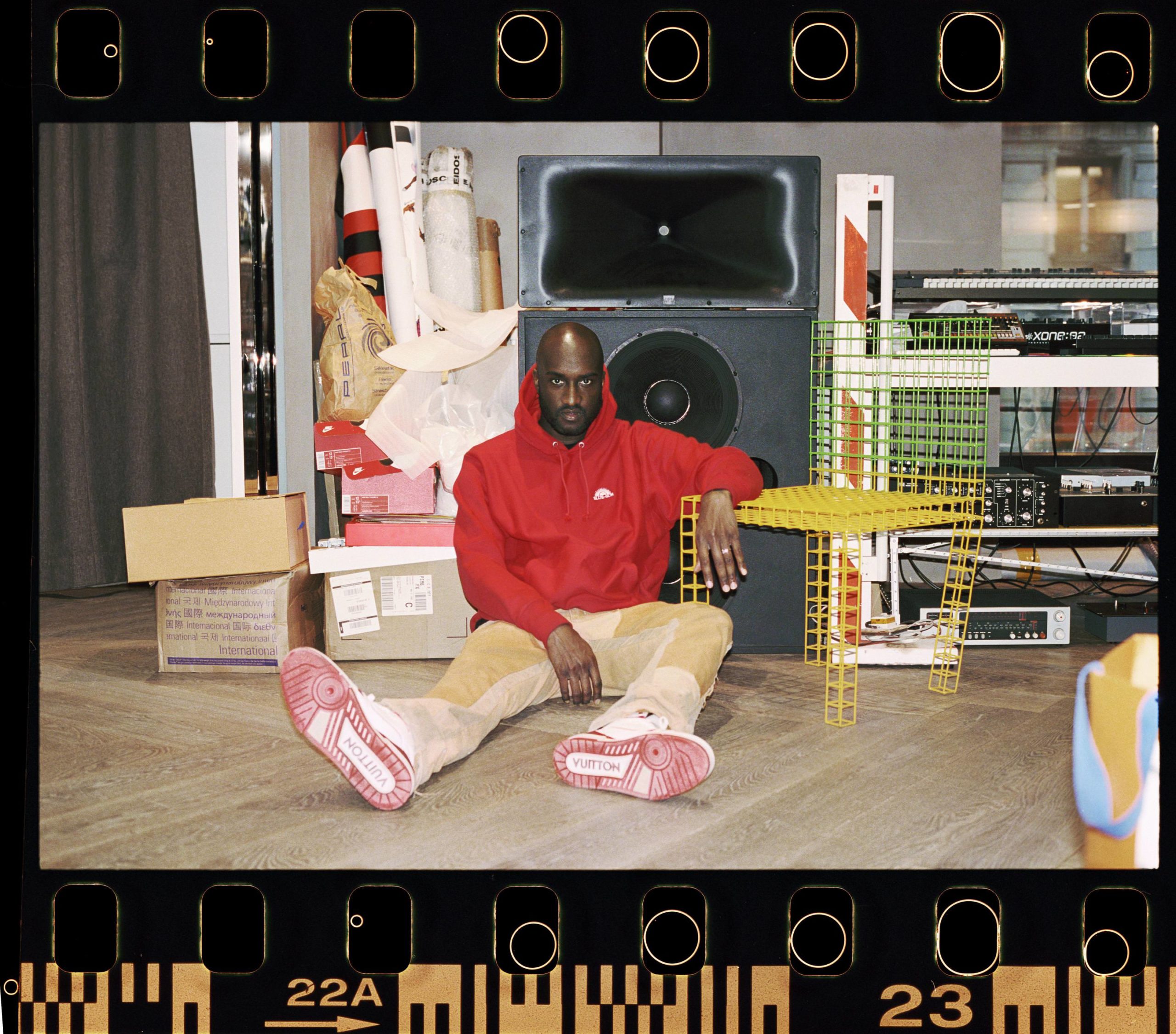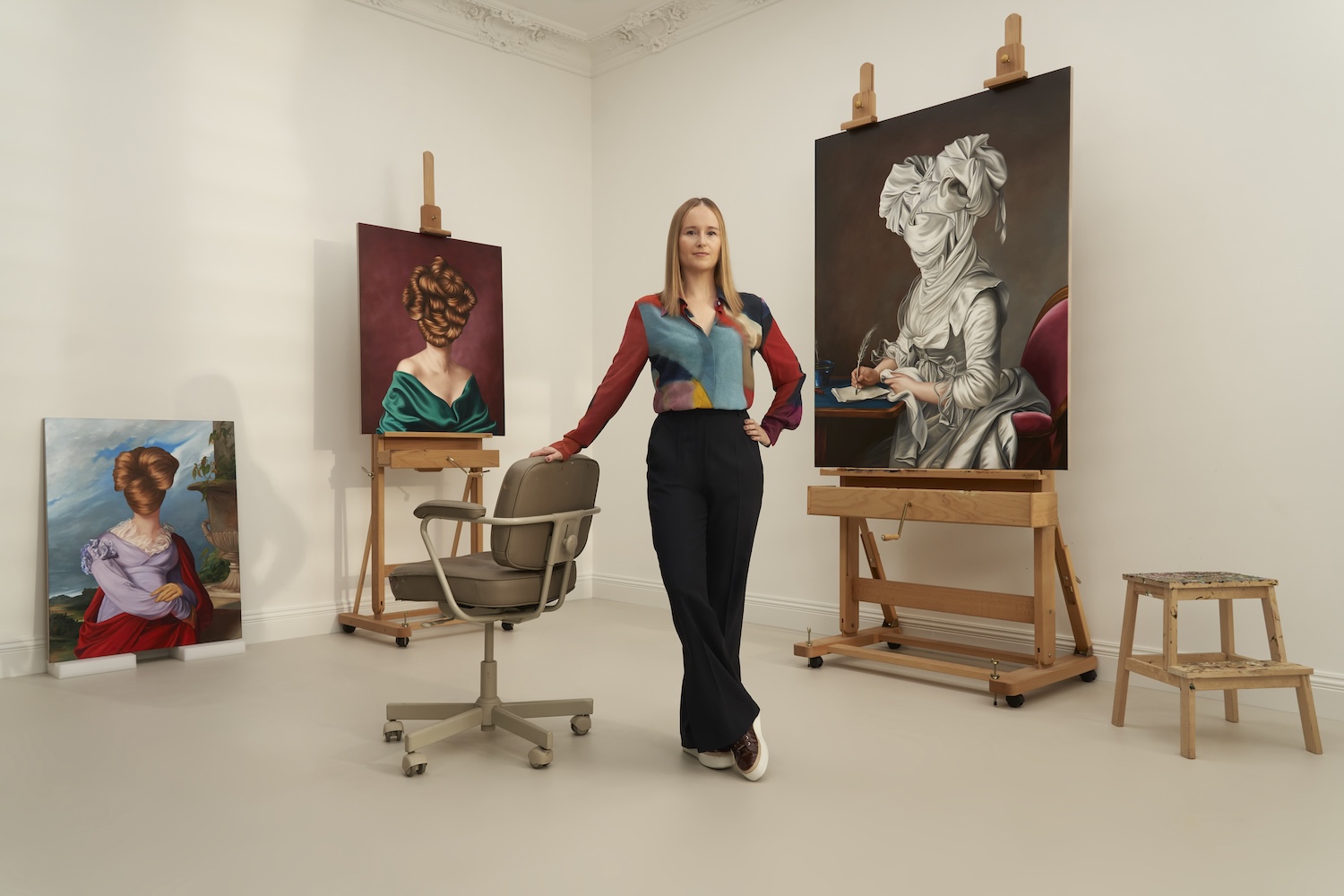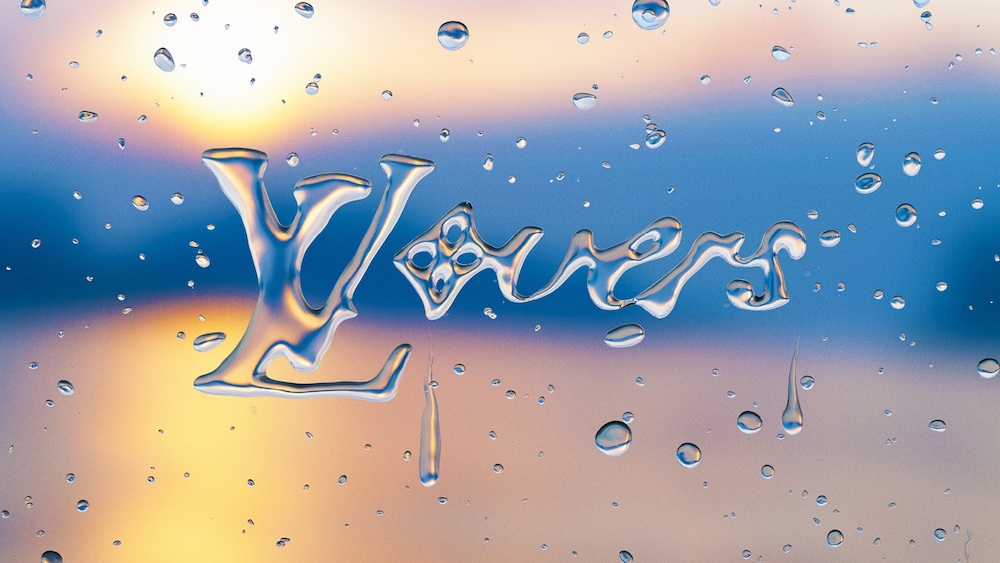Virgil Abloh is sitting across from me, writing his name in sharp graffiti-style bubble letters and replying to messages on WhatsApp and Instagram. He just spoke on an intimate panel at NeueHouse in New York to preview his current show at MCA Chicago, “Figures of Speech” (June 10–September 22, 2019), so he’s taking a personal moment to reconnect. He smiles, says he’s ready to chat, but doesn’t move on from his other activities. Just as it has always seemed, he is a master at multitasking.
As we begin to talk, he slowly slips away from other distractions and into deep thought. Some questions are answered at rapid fire; he doesn’t flinch, or even seem to think. Other answers take time and consideration; he philosophizes out loud, pausing to ensure he’s understood. Throughout our conversation, we talk about his ability to fill many shoes—excelling in various industries, simultaneously working with an array of hard-to-reach collaborators, and communicating his limitless, deft ideas through music, fashion, design objects, art, and more. After all, the exhibition centers on each facet of his creative life thus far.
Abloh, presently the artistic director for Louis Vuitton menswear is not just a designer or a DJ, an architect or an artist, a co-founder, streetwear legend, best friend, or cultural icon. He is progress, from beginning to end. He is the sum of many, many parts.
WHITEWALL: Tell us a bit about “Figures of Speech,” organized by curator Michael Darling and designed in a space by Samir Bantal at AMO (Rem Koolhaas’s architectural firm OMA’s research studio). It brings together a lot of career highlights—fashion collections, furniture, videos, graphic design work—and new collaborations with artists like Jenny Holzer and John Baldessari.
VIRGIL ABLOH: My exhibition is my world condensed into one amazing space. It examines the choices I’ve made, the media I work with, and the context of my inspirations. Art, music, fashion, and architecture may seem to be vastly different outlets to some, but in my eyes, all of my endeavors in each work hand in hand, serving as an influence to one another. This is my opportunity to not only showcase my work that I am so passionate about but present it in a nontraditional way and inspire others.
WW: Do you have any personal highlights?
VA: My true answer is the body of work. To have highlights sort of makes everything else lower in a way, and I don’t think about it as, “That one work or project is the epitome.” Each one props each one up and I’m more interested in the totality.
WW: Recently, a political aspect has appeared in your work, and we see a bit of that in “Figures of Speech.” Can you tell us a bit about that, and how Michael Darling and Samir Bantal went about organizing its message?
VA: It’s the same way as when you’re walking down the street and someone on the corner stands on a soapbox and says their political opinion. You turn it off before you even hear because you know you need to keep your mental train of thought just to get through that corner.
Without revealing too much, I understood at a very early age that in order to make it through and find my own identity there was a sort of naïveté that was going to help me get through that. You know, my parents are from Ghana in West Africa. I was raised in a Chicago Middle America suburb and was the only black kid, but I was African. When I go to a job interview, I can’t hide who I am. So the methodology in which I advanced my work or addressed it was always at a different timescale than reality. The crescendo that’s happening now in design and art and music and fashion is maturing and hitting a different stride.
To my analogy about the street corner with the guy on the soapbox yelling at culture saying, “This is a travesty!” there’s always one of two ways to deliver a message, and I believe that’s the vitality of “museum.” Question everything. As soon as you walk through that door, most people can tolerate and listen to that person saying, “Hey, this is an issue,” but the things that the museum is doing to shift culture, that’s what those walls are for in my mind. I thought that this exhibition was the perfect specific point of view about how race informed my work, and Samir and Michael focused on how to communicate my strong opinions in a way that’s impactful.
WW: We attended your Moët & Chandon dinner for the “Do Not Drop” bottle launch, your Rakastella DJ set in Miami during Art Basel, your Design Miami/ talk, your Chrome Hearts pop-up, covered your Louis Vuitton shows . . . You’re everywhere. We got the feeling that you’re redefining design by not really adhering to any specific boundaries. What kinds of techniques or principles are you using to redefine design?
VA: To me, for design or fashion, there’s the object itself. And then there’s a halo around the object, like, “Why does the object exist?” I segment them both, and I focus on one another independently and interrelated. So, I make a shirt. Why does the shirt exist? If I take the actual object of the shirt away, what did that shirt represent? That should be tangible and have its own voice and have a reason. It’s an iterative process that makes my work, and that process is what I value the most. It’s not so much the object or the halo; it’s the process that overarches all those things.
WW: A lot of your work deals with collaboration as well. How do you choose who to work with?
VA: For me, it’s a sort of embedded nature to move culture along. It’s, in short phrase, to break down barriers.
My overriding notion is “tourist and purist.” I divide the world into two different categories. It’s the purist that says, “I know everything about anything. I’ve studied art history from zero. I’ve studied fine dining. I uphold the sort of ‘old guard’—these walls need to be tall and they need to be exclusive.” That’s what keeps every world (art world, fashion world, or anything) strong—by fending out the tourists.
I see the tourists as a segment of the population that is intrigued, their interests are sparked, they’re coming with good nature, and they figuratively want to go to the Eiffel Tower first when they land in Paris and take a photo of it. They’re not too cool. They want to see Mona Lisa even though they know the line is super long and it’s for tourists. I focus on the tourist and the purist because I feel like that’s a segment of art that actually changes the world.
For me, it’s important to know that when I collaborate, even the moment when I first started in fashion, I was cast as a different prototype. Fashion designers generally didn’t look like me or have the knowledge of art, or these things that were assumed.
When I first met Jenny Holzer, most people were shocked that I could even get hold of her. But our commonality was that purism was at an all-time high and that us coming together breaks down the barrier between perception of who I am and perception of who we are. Then our work comes together and brings light of immigration to two separate audiences. It’s one of my motivations, breaking down barriers. A collaboration can do that.
WW: And you embrace your tourist and your purist sides to do that.
VA: Yeah, and that’s what Off-White means for me. What I’ve noticed in my work is that often to create value, you have to claim something. But in light of a political situation, or just bringing up politics at Thanksgiving dinner, it’s sort of like whatever you proclaim, it’s illegal to change your mind. I’ve distilled this issue with a lot of the world. It’s okay to change your mind. It’s okay to voice something, hear something back, and then change your mind. All of these human qualities affect the work that I make. I propose being in the middle. I don’t say you have to be this or that, and my work is a conundrum.
Off-White, the name itself, sits between black and white, and I’ve looked at every opportunity in pop culture since to be able to put forth these ideas that you don’t have to fit in a certain box. That’s not just a kumbaya statement to make the world a better place, but you can achieve a higher surface area of ideas by presenting them in a particular way.
WW: Was there anything that propelled your thought to collaborate with those that inspired you, rather than just simply being inspired by them?
VA: There was an early book called Content produced by OMA that inspired and formed how I was thinking about the outside world, so it’s interesting that it’s all coming together. That was sort of the lightbulb that sent me off into all of these different spheres. So just in my same sentiment, if there are people on Earth that I believe are contributing in me as a younger generation, I’m going to close that loop to sort of make a new one and make a new book for another generation. And that’s what collaboration is. It’s everything that you would’ve thought.
I want the best. I want what inspired me to also be at the forefront. People call me a “serial collaborator” and that’s because I like the idea of notating a figure and working in unity.
WW: You’ve been doing fashion for ten years. First was Pyrex, then Off-White, now you’re the menswear designer at Louis Vuitton. For your first collection, you referenced The Wizard of Oz and the second collection referenced Michael Jackson—two classic icons that exist worldwide, not just as films or people. Why?
VA: There are things that pop out, but it’s one train of thought that I go into when I think about different buckets. The whole concept is more with the campaign that just launched, which is about boyhood.
I’ve been asked by Louis Vuitton to create menswear. So, it’s a series of questions. For anything I do, I just ask questions and the answers to those questions result into the proposition of design. So, it’s like, “All right, I’m making menswear.” Then, “Why does this house have menswear?” or “What is menswear?” And “What makes men?” That’s what the campaign that just launched is about—boyhood, and the different phases in one’s life.
The campaign to me is harder, which is the halo. But it’s the construct that makes the halo that’s the challenge. That’s what makes good things anything. It’s not objects so much; it’s the campaign. It’s Mad Men the TV show; it’s a boardroom of smart people sitting around trying to figure out how to get people to move to this thing and that. You can quantify the world; I can quantify this title. Evian, NeueHause, Nike. That’s my work. On the surface level, I can make things. But the totality is a different lens that I’m trying to make equally as potent. Not just objects, but both.
WW: Can you tell us a bit about how you went from the campaign of “boyhood” to creating your first collections? Did the questions continue until you reached new narratives, providing context for the two collections we’ve seen?
VA: Louis Vuitton started with one point, and then it’s narrative. As I moved along, it went from boyhood and then to, “Who is the muse?” It’s not enough for my brain just to have two correlations—from one thing to another. It has to have six. Then I start going in between the six layers.
So it started with The Wizard of Oz. Then, if you study that film, there was The Wiz, which was Quincy Jones, and Diana Ross wanted to be Dorothy. Michael Jackson played opposite her. So there was that link. But then Michael Jackson equally was a public figure that the world got when he was a child all the way until he was an adult, ultimately with his passing away. He was like public property. He also singularly contributed to fashion in an unprecedented way. So there was a link between The Wizard of Oz and The Wiz, but also Michael Jackson as a persona. But then boyhood.
I used these larger constructs to make sure that season one and season two has a lineage. When I go to season three, I look at the body of work from season one and season two and go to three based on where I think a logical expression can go.
WW: There are many new parts of culture today that didn’t exist before, such as the emphasis and rise of technology. How do you see technology’s influence continuing to change art and fashion?
VA: Technology is beneficial in the positive forward movement of art and fashion. Endless information is available at your fingertips, allowing for inspiration for new ideas and ease of communication. Communication and connecting with others leads to endless possibilities—breeding new ideas and the creation of things that have never been done before.
WW: If you were to be known for something far in the future, or even today, what would you hope it to be?
VA: I’m trying to stand for a generation. My generation is the new generation—the kids. Millennials are the future; part of being a step ahead is acknowledging and observing my audience. I feel like we’re at a new Renaissance for young people, and it’s only if the presiding generation, the gatekeepers, adopt the new attitude that they will make that new Renaissance happen. I hope to inspire all and connect this new generation with the one before us in a harmonious way.










